The Race Organization in the Old Days
[caption id="attachment_8942" align="alignnone" width=""]Miami, platform for the Race Committee with racing signals[/caption]By Giorgio Brezich The Racing Rules of Sailing have remained more or less the same. Today things are specified in a more precise and detailed way, but the main principles are basically the same. Quite different is the management of a regatta. In the past there were not many motor boats available, and there were no rubber boats, so the setting of the race course was done once and then the marks almost always remained on site throughout the season. A mark was placed to the prevailing wind direction or its opposite. In Trieste, the prevailing wind direction is East-West ... so that's where the marks were laid. Sometimes the first leg was upwind, sometimes downwind. The sequence could be reversed as a result of the wind at that time. The whole thing was accepted because there were no alternatives. ...
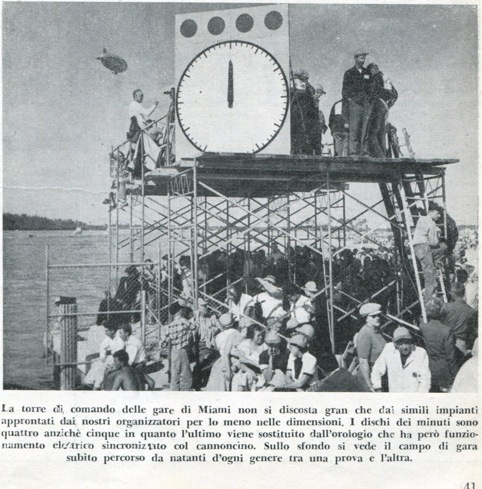

By Giorgio Brezich
The Racing Rules of Sailing have remained more or less the same. Today things are specified in a more precise and detailed way, but the main principles are basically the same. Quite different is the management of a regatta. In the past there were not many motor boats available, and there were no rubber boats, so the setting of the race course was done once and then the marks almost always remained on site throughout the season. A mark was placed to the prevailing wind direction or its opposite.
In Trieste, the prevailing wind direction is East-West … so that’s where the marks were laid. Sometimes the first leg was upwind, sometimes downwind. The sequence could be reversed as a result of the wind at that time. The whole thing was accepted because there were no alternatives.
…
The start was given by the Race Committee from the land. I will try to explain the system with a help of the following pictures:
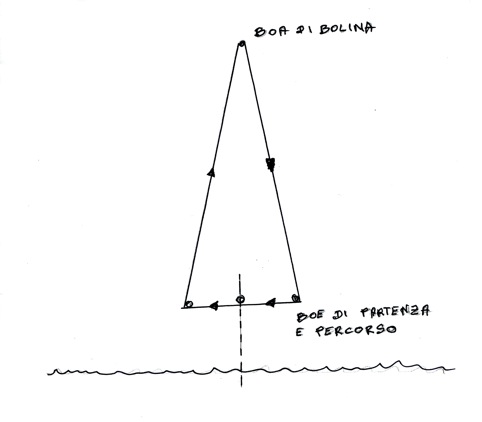
Boa di bolina = windward mark
Boe di partenza e percorso = starting marks and course marks
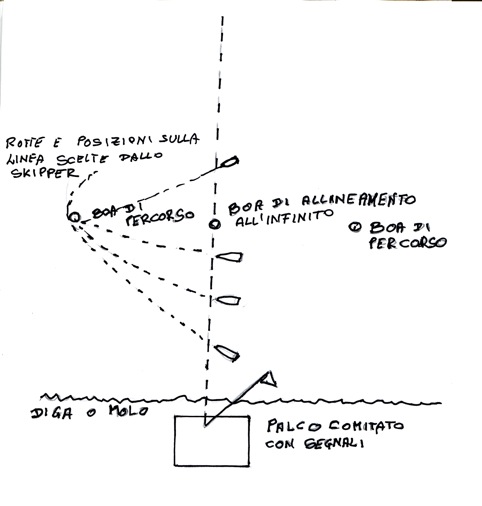
Diga o molo = sea wall or dock
Palco comitato con segnali = platform for the Race Committee with racing signals
Boa di allineamento all’infinito = mark (starting mark) for alignment to the infinite
Rotte e posizioni sulla linea scelte dallo skipper = routes and positions on the starting line chosen by the skipper
Boa di percorso: course mark
An interesting curiosity was the system for measuring the time. The majority of the competitors did not have a waterproof watch so it was necessary to give fair help to all. The signals were given, as nowadays, with flags, but the last five minutes were marked with colored discs that were turned one by one with the running of time. And in the last minute seconds were also reported, with a wooden hand on a big clock face. The hand was moved manually, with painstaking precision, by the official timekeeper of the moment (in Trieste this was professor Quarantotto). At the start, a nice cannon shot. The finish was crossed by passing the same line and the first boat was welcomed again with a cannon shot.
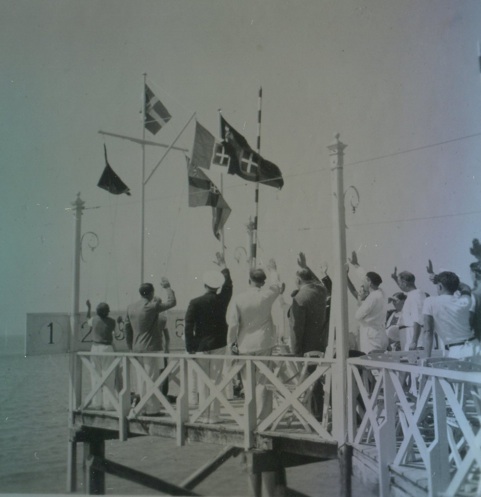
Sergio Riccobon reminds me that an evolution of this system was when they started to turn half of the discs to indicate that it was run half a minute.
All of our clubs were equipped with one or more guns, firing blanks, using cartridges filled with black powder, and with cardboard disks.
It was a scene that really remains in my hearts and memory.
Comments for this post are closed

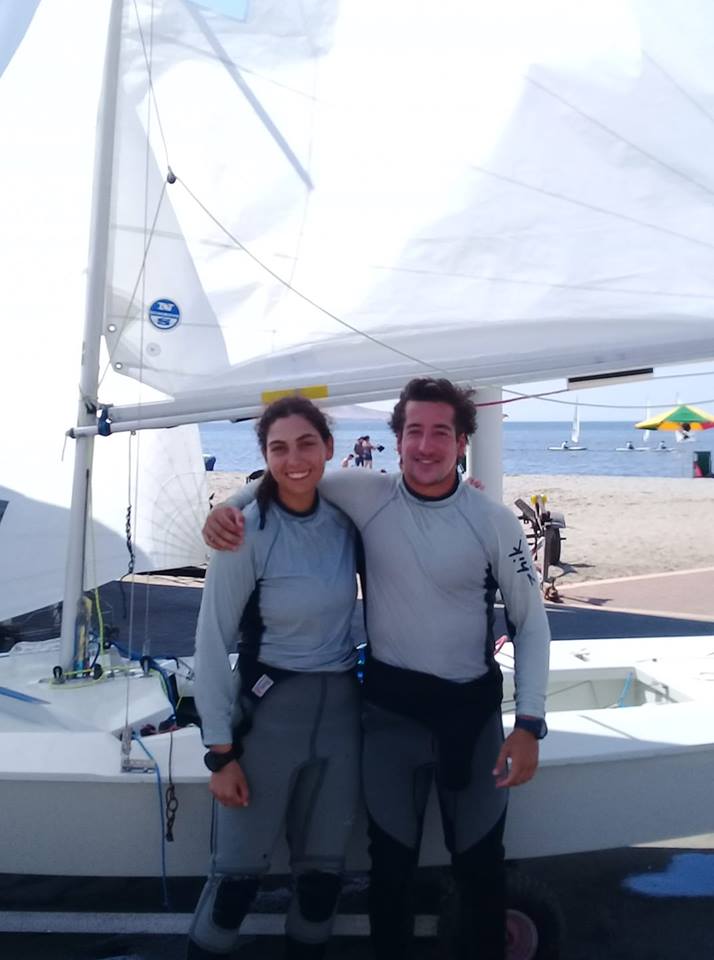
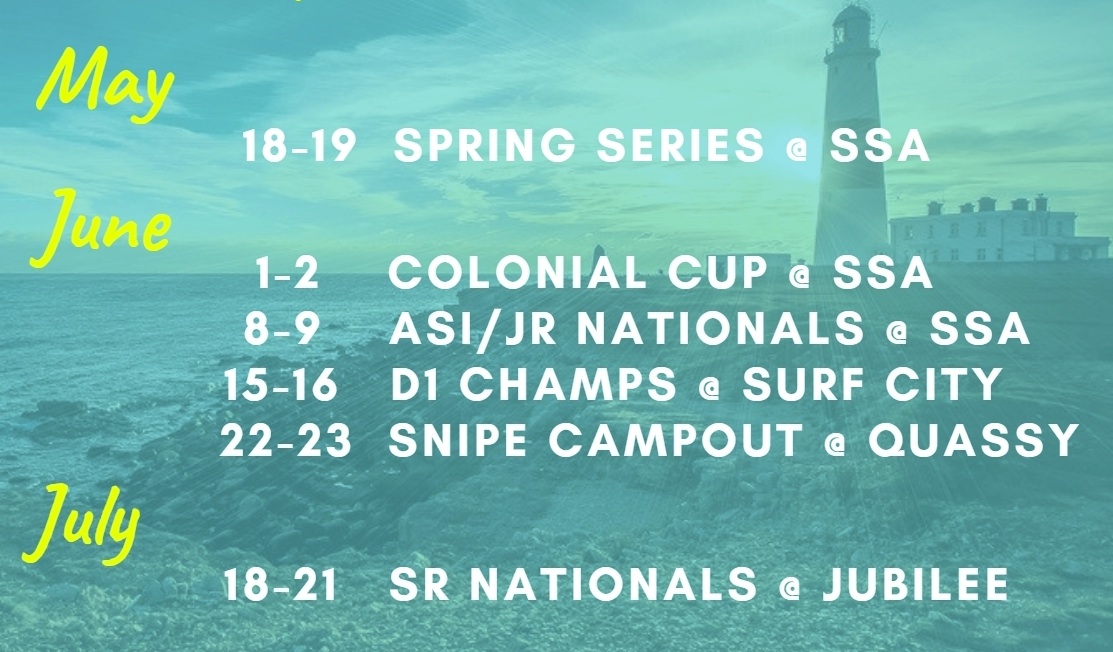
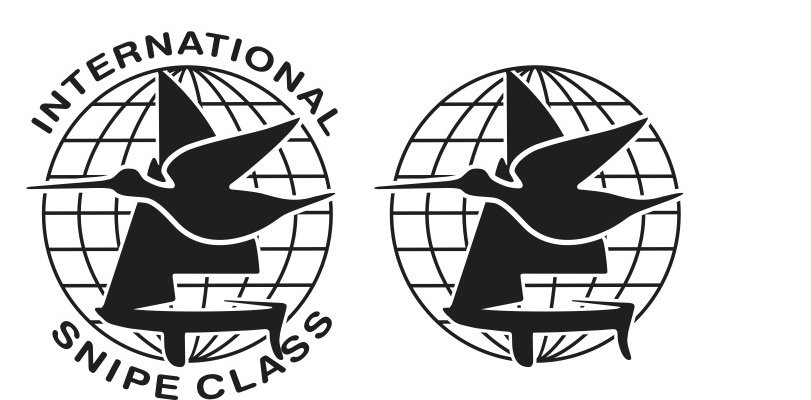
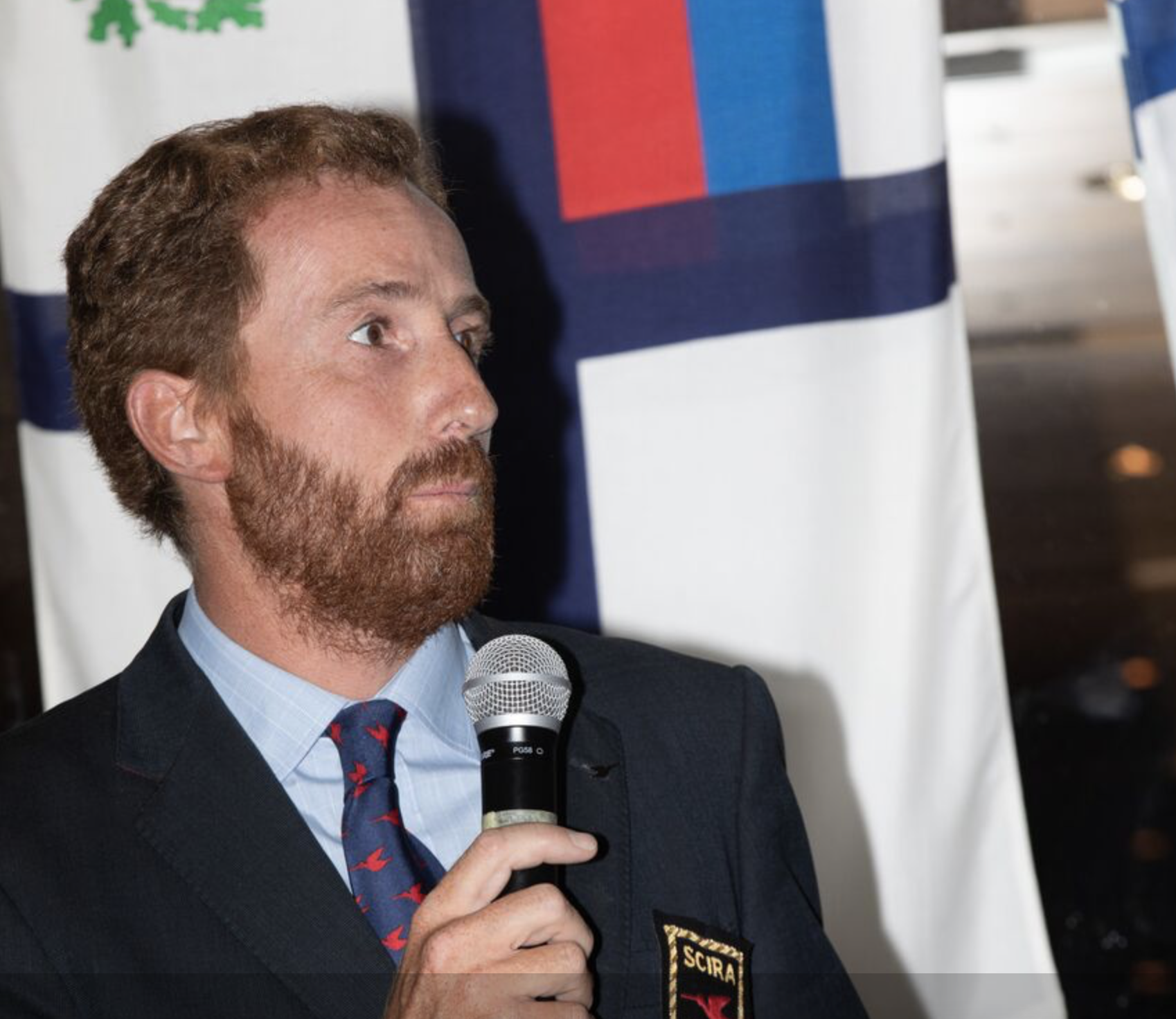
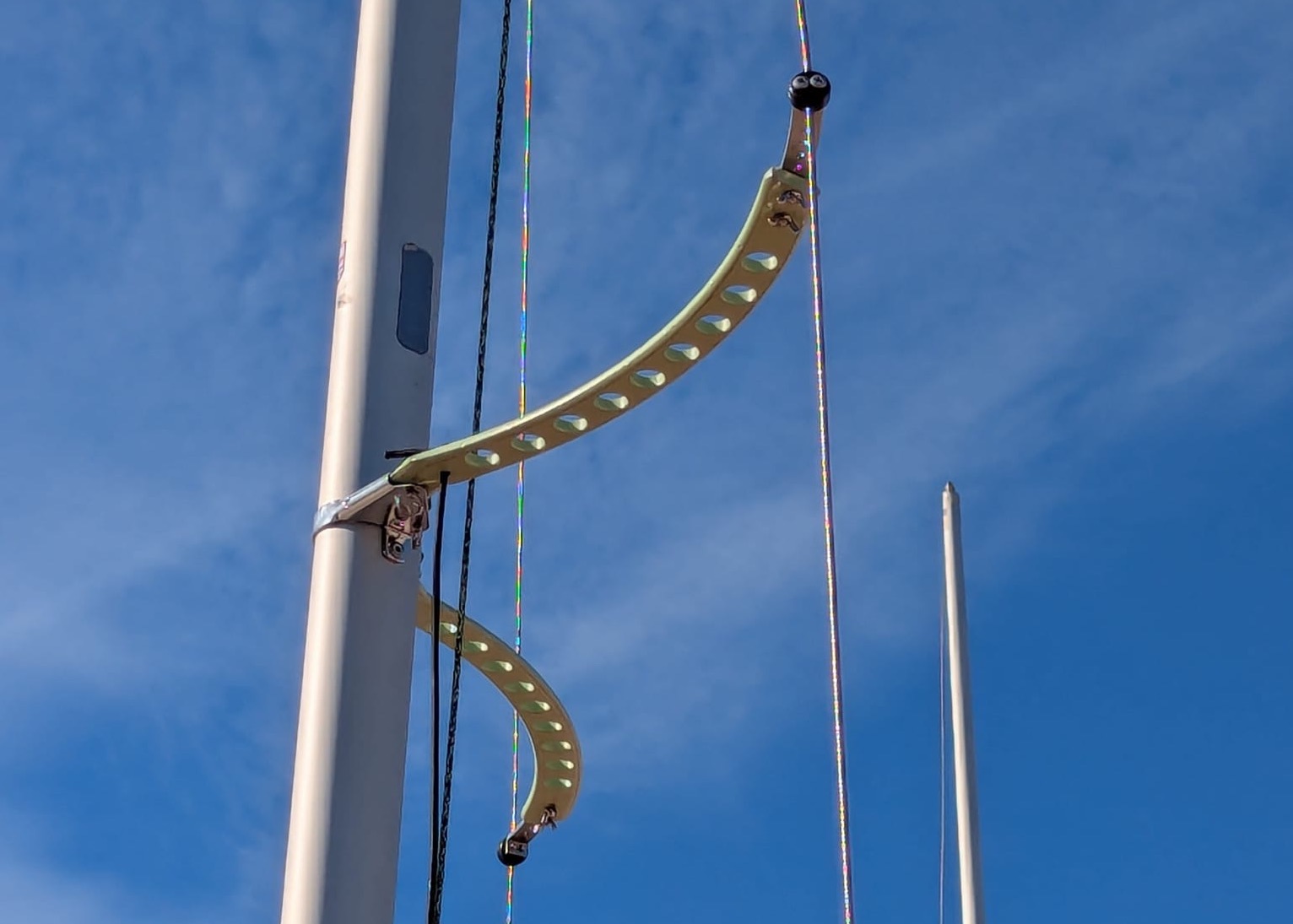
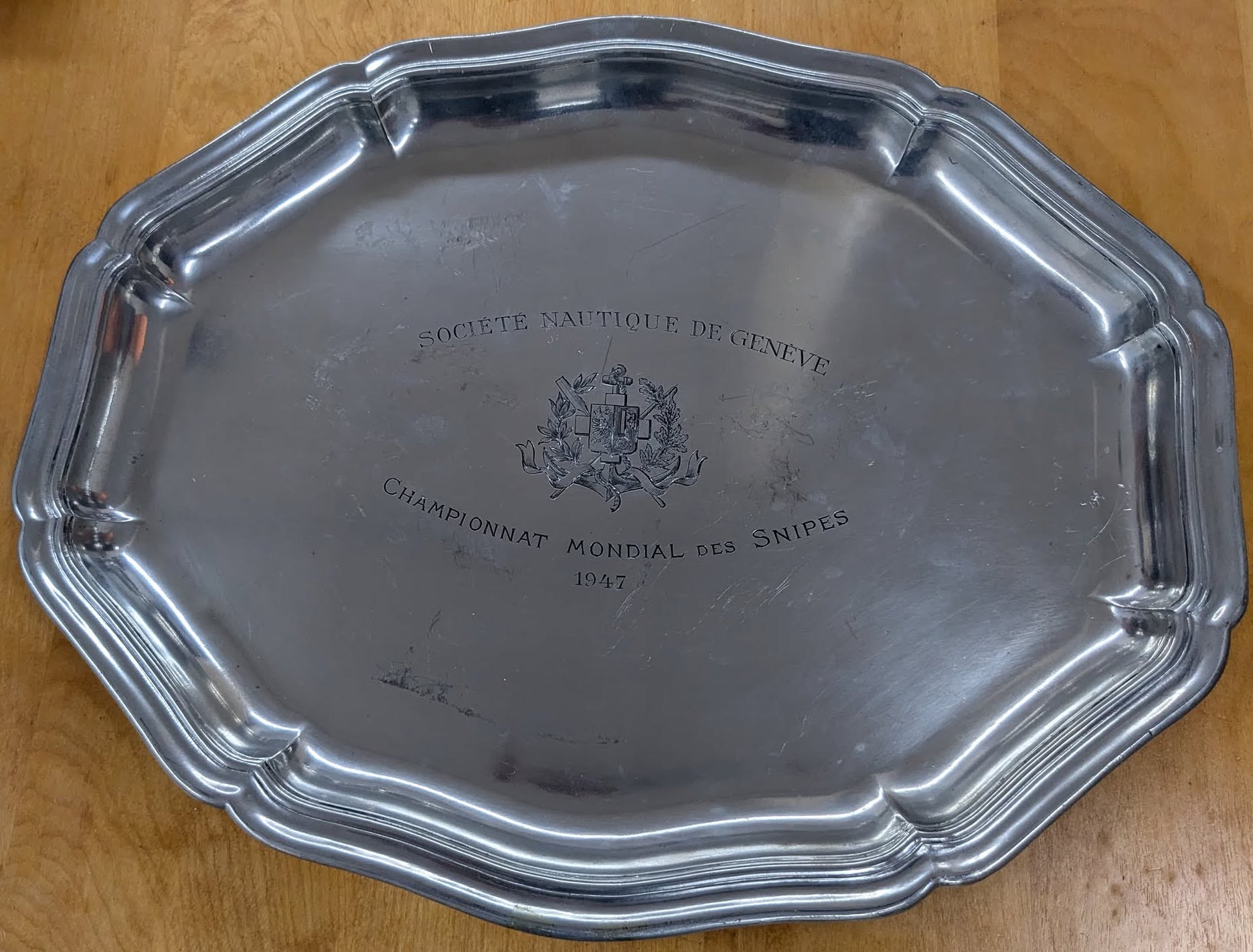
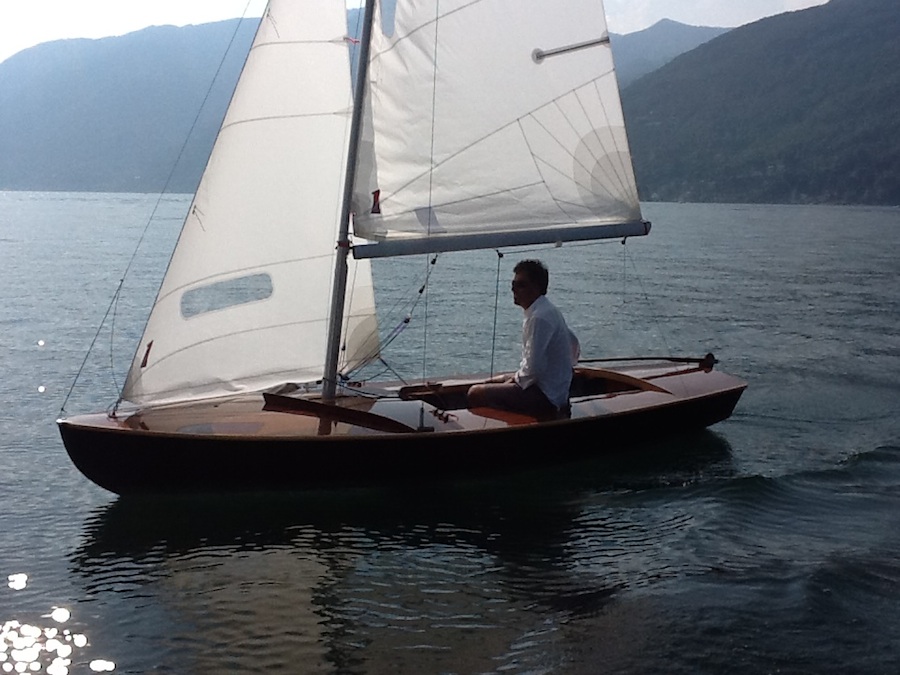
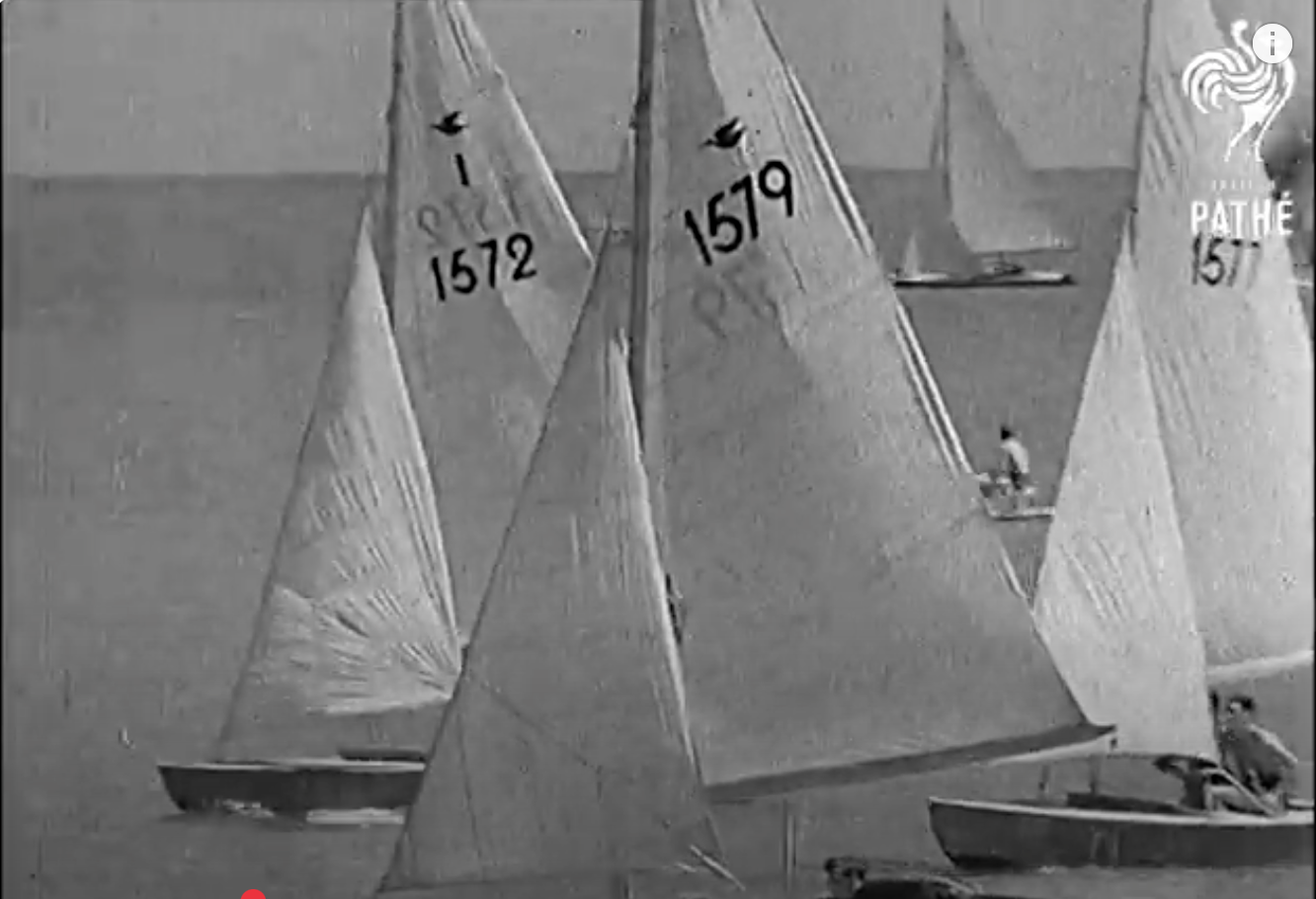
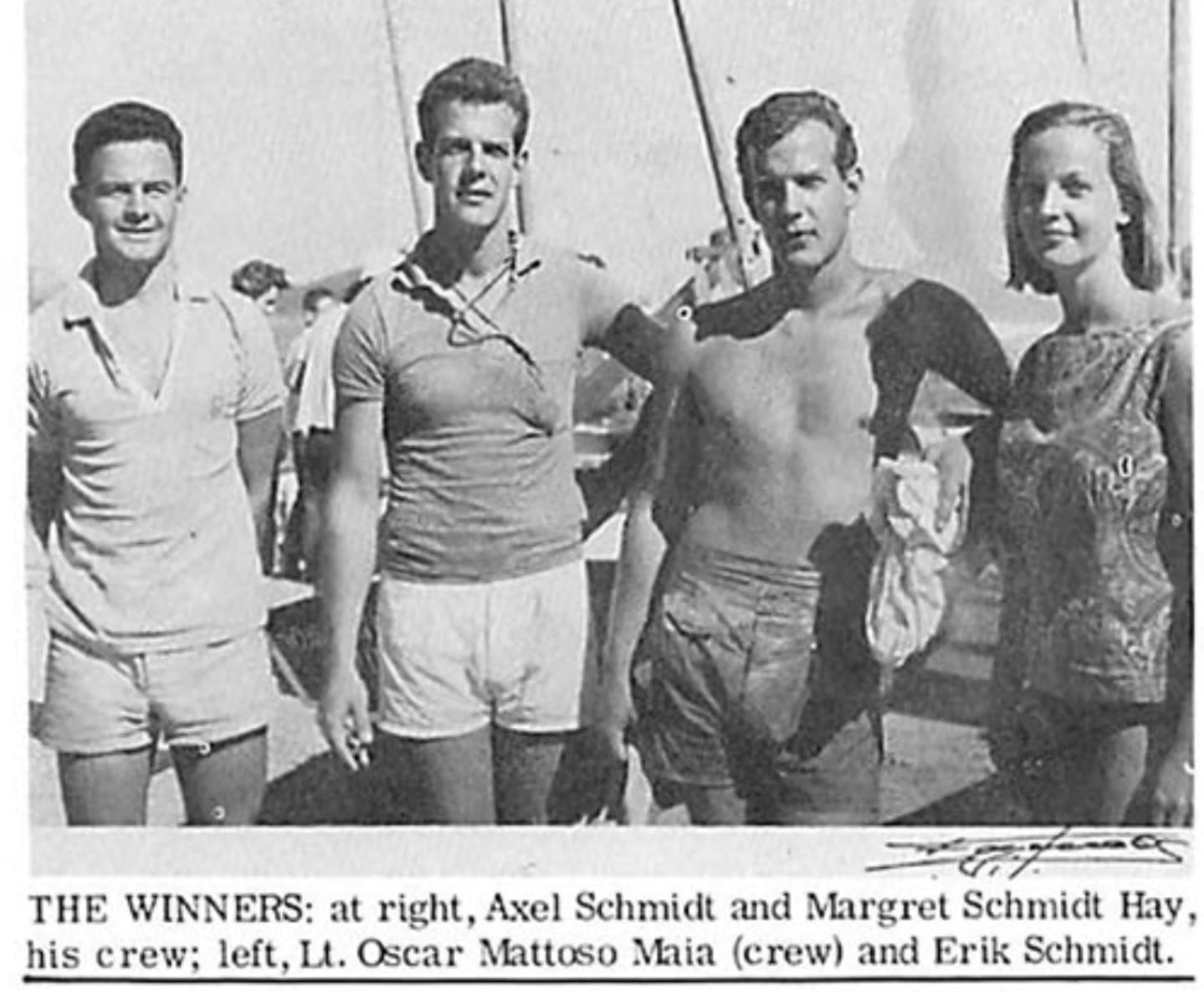
0 comments